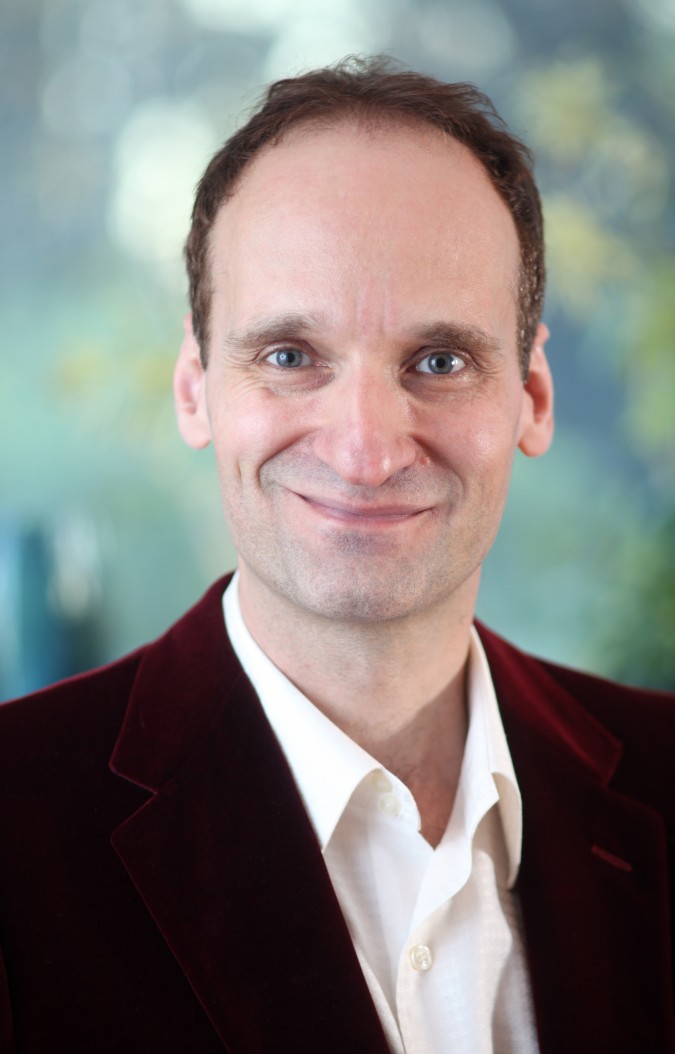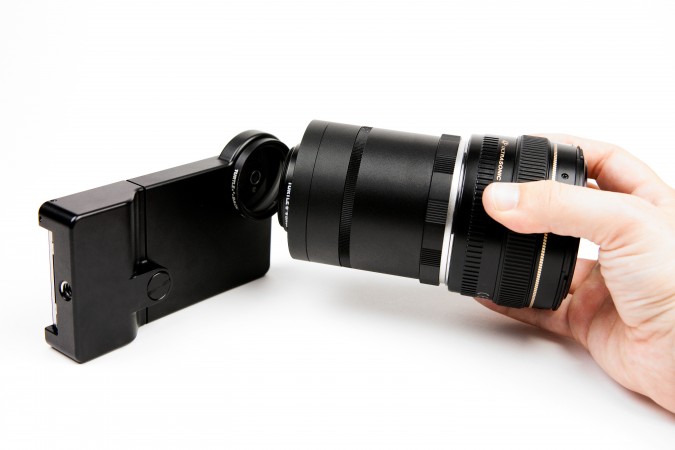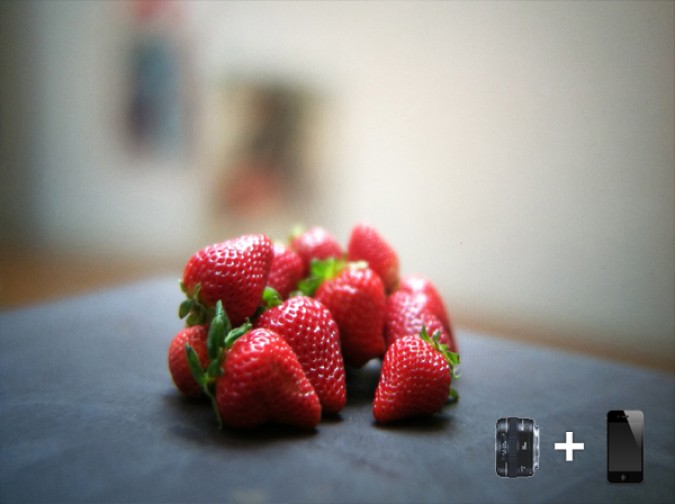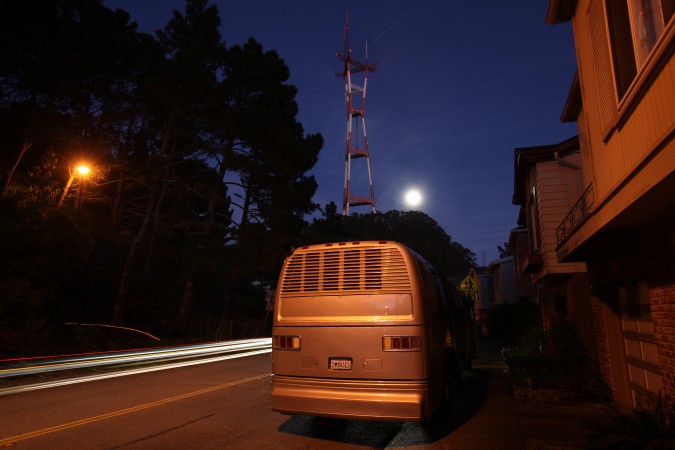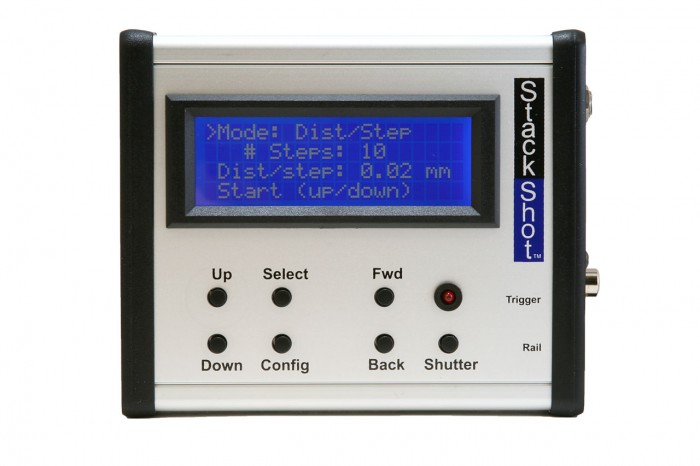Archive for the ‘Photography’ Category
Kevin Warnock photographed by Kevin Warnock
I took some self portraits of myself today. This is the same location where I photograph the models I usually photograph.
I used my Canon 5D Mark II camera with a Canon 135mm soft focus lens that was not set to soft focus.
Click these pictures once to see them on a page alone, and then click them again to see them full size.
I placed the camera on a tripod and used the self timer to give myself time to jump into the picture. This was a tricky shoot since I shot these pictures at F2.8 for the shallow depth of field.
Canon and Nikon lenses on the Apple iPhone 4 smart phone
I take a lot of pictures, and I have some nice Canon and Nikon SLR camera lenses.
Here is an Apple iPhone case by Photojojo that will let me attach my SLR lenses to an iPhone 4. The big lens is positioned in front of the small iPhone camera lens, and the two lenses work together to allow the iPhone to take advantage of the capabilities of the larger lens.
This iPhone gadget should be just the thing for iPhone cinematographers that want to promote that they are using an iPhone for all the attention that will grab.
I suspect such cinematographers will downplay that they are using exotic SLR lenses that weigh and cost much more than the entire phone.
I learned about this gadget on TechCrunch.
I will not buy this case since I have a Canon 5D Mark II, which takes better video than I’ve seen except on high definition television stations. But it’s a cool product, and I’m charmed by it, which is why I’m writing about it today. I hope Photojojo sells a lot of these cases.
Here’s a closeup picture taken with an iPhone 4 and an SLR macro lens.
Introducing FaceSeat to remotely attend weddings and funerals
Since Apple iPad tablet computers have forward and rear facing video cameras, and are set up for slick and easy video conferencing, I have a proposal:
Make iPads available for check out in hospitals and nursing homes, so that patients can receive ‘hospital visits’ from their friends and family more frequently.
I bet that if a scientific study were conducted that patients would get well sooner and be happier if they could video chat with their friends and family for free, even if they didn’t own or know how to operated a computer. I suspect the video chatting on the iPad is so easy to use that nurses and doctors could be trained to be trainers in mere minutes.
I suspect there are already robust WiFi networks in care facilities, so the networking is already in place.
While we’re at it, install permanent video cameras at all funeral homes so people can attend even if too far away to travel.
For that matter, install video cameras at churches and other places where weddings take place, so more people can attend weddings.
For an extra dose of ‘being there’ somebody could create a holder for an iPad that would look sort of like a person from the sholders up. Where the face would be, place the iPad. This iPad holder could be clipped to the back of a chair or bench.
This way a church, wedding venue or funeral home might have 10 ‘remote seats’ available, where one iPad equals one seat. When someone is occupying a seat at home, their face is shown full screen on the remote iPad. In this way, the physically present attendees can see the faces of the remote guests, and the relatives will be comforted that more friends and family could attend.
Since all these iPads cost money, I suppose it would be OK for wedding and funeral venues to charge extra for these virtual seats. But I would say just give them away at first, to get people hooked on the concept. It’s such a far out idea I am doubtful people would pay until they had seen it done at another event.
I read once that when the grocery shopping cart was invented and placed in stores that nobody touched them. The proprietor had to hire pretend shoppers to push them around as if they were really shopping. That educated actual shoppers, who began to use the carts themselves for real. I think something similar might be required to get this idea off the ground. It might even be necessary to hire fake guests who do not know the wedding party or the deceased, to virtually attend the wedding or funeral, cry and be present.
I’ve read that in Japan there are businesses that rent actors to attend weddings in person to give the impression the bride and groom have more friends than they really do. So there is a precedent for fakery like this.
I think the idea of virtually attending important life events is a good one. Especially going forward with jet fuel being so expensive and security standards getting stricter. It just isn’t a great idea to fly all over the planet for all these events, and such travel I predict will one day become politically incorrect.
There are so many ways to make my idea more like being there. The iPads could be mounted on motorized tripod mounts the remote user could adjust, so people could look to their sides and say hello to real people. The iPad has a camera on the back already, so people could see who was sitting behind them. Maybe two iPads could be mounted back to back so that people sitting in the back could see who was sitting up front in the virtual seats.
Lots of people miss lots of important events. My idea is much more social than simply installing some anonymous cameras that might be security cameras as far as the attendees are aware. With my idea, people present physically can interact with people present virtually.
I dub my idea FaceSeat.
Of course, this concept is applicable to zillions of events beyond weddings and funerals, but at first I would focus on these big markets — a lot of people marry and die in the world.
With the provocative name FaceSeat I could get sued by Apple and FaceBook at once. Think of the stunning PR that would result – instant mind share. If Oprah [Winfrey] still had a popular daytime television show, I’d be on it within days of the lawsuits being filed.
PS — This is just a wacky idea I’m writing on my blog! I am not jumping into to the videoconferencing industry. If someone has already thought of and published my idea, I’d like to know about it so I can update this post.
Moon over Mount Sutro
Last night as I was lamenting yesterday crashing my beloved RTS bus conversion, I noticed there was a full moon rising over Mount Sutro, which is about half a mile from my house in San Francisco, California. It was not yet fully dark, so I ran for my camera and tripod and set up behind my conversion to take some pictures. I used an 8 second exposure, so you can see the trails of car lights driving past. The shot here is my favorite. Enjoy.
I am going to teach people I don’t know to cook

Pan with fruits and vegetables. Photo by Michael Korcuska via Flickr, used with Creative Commons commercial use license
I love to cook. I love to eat. I love technology. I love photography. My camera shoots high quality video. I like visitors to my blog.
Given the above, I’m going to start an online cooking show. I have been talking about this for years now, but this year I’m going to take action and get started.
I have access to a dedicated studio just for this project, and it’s all new and sparkling clean. It’s not someones’ kitchen – it’s dedicated to this cooking show and has in fact never been used for cooking, as that would put wear and tear on the appliances and cabinets and decor, and shorten the time everything looks brand new. It’s not quite finished yet, but soon will be. Light fixtures with properly color balanced bulbs for professional results have been acquired, and test shoots have been completed. The space looks amazing on video.
I’m going to use my Canon 5D Mark II camera to shoot the video. This is an astonishingly good video camera, as you can see from the video I’ve already posted to this blog. I will edit the video myself in Apple’s iMovie software.
I’m ordering a dedicated wok burner, since I plan to start the episodes with dishes that are cooked in a wok.
I have in mind that I’ll take the viewer shopping with me to Rainbow Grocery coop, where I do my own grocery shopping. This is the best grocery store I know of, and it’s a model for how I think the world’s grocery stores should be run. One of the best things about it is the stunning variety of offerings, and the large bulk goods section. This section contains some 800 items. I take a dozen Ball brand glass caning jars with me shopping and fill the jars directly from the bulk bins. As a result, I throw out very little in the way of packaging each week since I reuse my glass jars indefinitely. I am paid a nickel for each jar I reuse, which is a powerful incentive to avoid wasting packaging. I would increase the incentive to 25 cents for better compliance, as it’s currently quite low from what I observe in line at the checkout stand.
I want my cooking show to teach people how to cook. But I also want to introduce people to different, more efficient ways to organize commerce so that these ideas can be copied and spread.
I’ve never taken a cooking class, so I technically don’t know if what I think I know is ‘correct.’ But what I cook tastes good, and is different from Panda Express and most Asian restaurants. I like to think it’s as rewarding as what you would buy in a modest but not cheap Asian restaurant. I think that’s pretty good given I’ve only been at this a few years and haven’t taken any classes. I hope to get a discussion forum going so that I can learn from my more educated viewers that might be so kind as to correct my mistakes.

Soup, picture by Flickr user avlxyz. Used by Creative Commons commercial license granted via Flickr.
I also plan to show viewers my garden and aquaponics system I’m setting up now. I will cook from the garden as soon as possible.
I hope to develop a speaking style that permits me to inject social commentary into the lessons, in a way that’s not overbearing or that comes across as lecturing. I really want to impress on my viewers the importance of not eating out much, both for biological health and financial health reasons.
I passionately believe that cooking should again be taught in middle school and high school. Eating is universal, so everyone should be taught how to cook. It’s a tragedy I didn’t really learn to cook anything exciting until 2006.
If I get a good viewership on Vimeo and YouTube, I hope to take my show to public access television.
I recognize that the big celebrity chefs one sees on TV have devoted their lives to their craft. I have no plans to make this my life, so my show may well be awful compared to what the pros are doing. But I don’t think it will be awful. I think it will be approachable, educational and warm hearted, and that it will touch enough people to make it well worth my time. Look for the first episode by February, 2011.
Note that I went to school with an actual TV chef, but I haven’t seen him since I was 14. If he should ever stumble upon my show, I hope he is kind should he bump into me at a future high school reunion. I only know about his TV life because of Facebook, not because I’ve seen him on television…
The craziest thing about my plan is I don’t watch cooking shows and don’t own a functioning television. I didn’t even know who Emeril was until 2008.
I wonder if Julia Child boxed sets are available on DVD or Netflix on demand?
I discovered the box in the upper right to subscribe to this blog has been broken for some time, so I don’t have as many subscribers as I otherwise would have. If you liked this post, and would like to subscribe, please type in your email address in the little box in the upper right. I won’t write useless nonsense to you, I promise. Thank you.
The album cover I shot for punk band The Sluglords
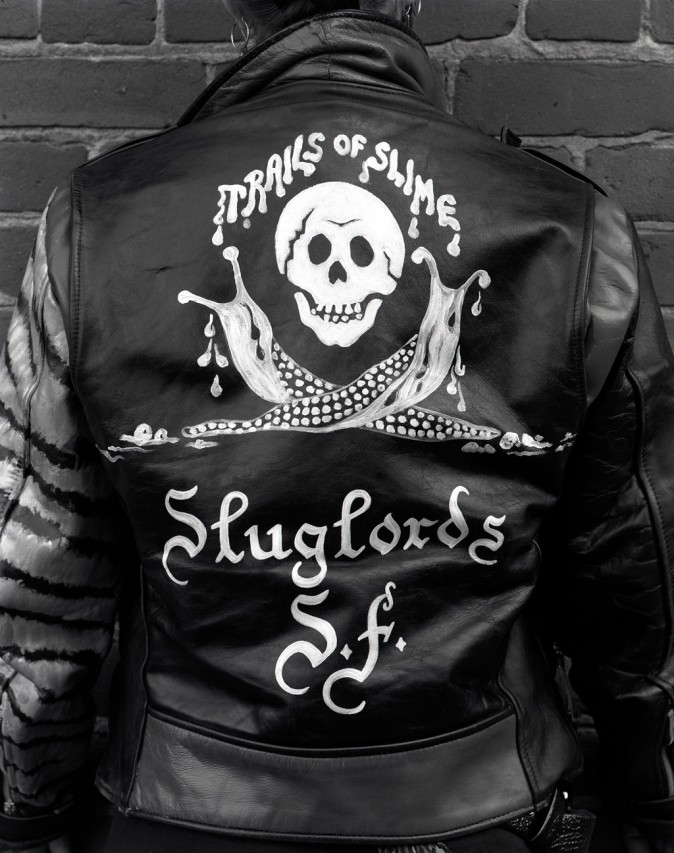
Back cover of 1986 record album Trails of Slime by the band The Sluglords. Photograph by Kevin Warnock.
Back in the 1980s I was a big fan of hardcore punk rock music. My friend Willy Lipat was in a couple of punk bands – The Jungle Studs and The Sluglords.
I took the photograph for the back cover of The Sluglords’ 1986 debut release ‘Trails of Slime’. The subject matter was a fan wearing the black leather jacket she had hand painted with the band’s logo.
I also took a few shots of the band members, but they were not used for the Trails of Slime album.
Earlier this year in 2010, the band contacted me and asked if I still had the negatives from that long ago shoot. I save all my negatives, and I had the original 4 x 5″ black and white negative, and it was in perfect condition. The band had the negatives scanned and they used the original leather jacket photo and one of the band photos in their 2010 CD Sluglords Forever. Trails of Slime was never released on CD, and my record player is in a box in the attic, so I haven’t heard the recording in years. It brought back memories to hear the music in all its newly digitized glory.
Here’s a review of the original 1986 record Trails of Slime.
Here’s a review of their current CD Sluglords Forever.
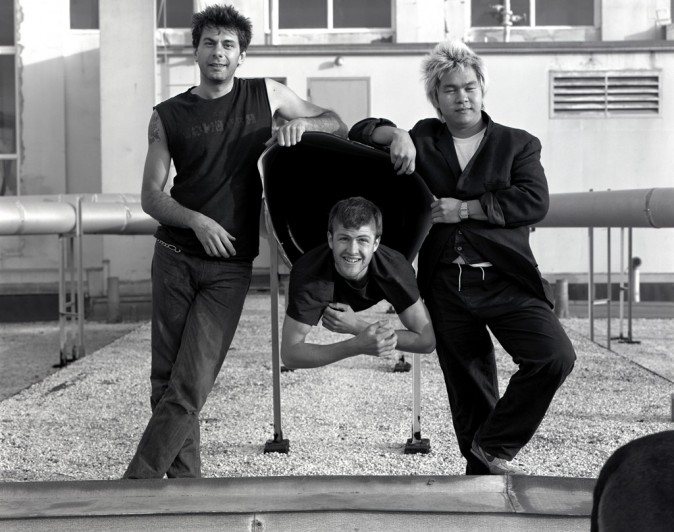
1986 photo of punk rock band The Sluglords. Left to right: Brunu DeSmartass, John Lieb, Willy Lipat. Photograph by Kevin L. Warnock.
I have photographed other bands, and I really like such projects, so if you have an interesting band, feel free to get in touch with me.
Thoughts about camera focus bracketing
I am a photographer.
I started taking pictures seriously when I was in 7th grade. In college, I switched my attention to the view camera, an Omega 45F which used sheets of film four inches by five inches in size.
I like to photograph people, but people move around a lot. This makes it difficult to focus precisely, especially using a view camera, since there is a lag from when you focus to when you can take the picture, since the film has to be inserted a sheet at a time, which takes a few seconds. As a result, it’s safer to use a small lens aperture, which increases the depth of field. But a small aperture requires more light, which requires larger flash equipment which costs more money. A small aperture also makes more parts of the picture sharp, not just the main subject. But with photographs of people, it’s often an advantage for the background to be out of focus, to direct the eye of the viewer towards the person.
As a result, for the best effect, it’s ideal to not use a small aperture to assure the person is in focus. But it’s really difficult to focus accurately at a large aperture. The famed late photographer Richard Avedon for many years did the cover shots for Vogue Magazine. He used a view camera that held sheets of film eight by ten inches in size. These cameras have a very shallow depth of field, and precise focusing is called for. His focusing was so precise that the tip of the nose and the ears of the model would be out of focus. Not enough to be objectionable, but enough to enhance.
I now shoot with a modern digital SLR camera, the Canon 5D Mark II. This is the best camera I have ever used. It shoots stills and video. Most of the shots and videos on this blog were taken with this camera.
What I wish is that Canon would update the firmware of the 5D Mark II so that when I press the shutter, the camera takes 3 or 5 pictures in quick succession, adjusting the lens focus automatically between exposures, starting with what the camera’s best guess is for the best focus. Then I would have the camera take 1 or 2 shots on either side of the camera’s best guess. Ideally, the degree of focus shift should be adjustable by the photographer, depending on the situation. When taking portraits with a telephoto lens wide open, perhaps a 3% and 6% shift fore and aft of the camera’s best guess would make it more likely one of the 5 shots would be perfectly sharp. When this camera is focussed perfectly, you can make 20 x 30″ enlargements that just shine.
Since Canon has not offered this feature, to my knowledge, I manually bracket my shots by hand, in manual focus mode. This is tedious, and not really that repeatable, as while I try to rotate the focus knob perhaps a milimeter between shots, who knows how well I do this from picture to picture. But even with the uncertainty of bracketing focus by hand, the results are worth the trouble. I can now confidently fully blur the background but have a tack sharp subject. This has improved the quality of my photographs of people dramatically.
Modern DSLR lenses contain swift motors, and modern DSLR cameras contain swift shutter cocking mechanisms. Combined, I am confident a camera could shoot a 5 frame focus bracket set in under 1 second. Yes, the subject may move or blink during this flurry of exposures. But the rewards of getting really tack sharp pictures shot wide open are worth the occasional missed frame. I find I often shoot over 1,000 shots per session due to my manual focus bracketing, and even then I can’t fill up my 32 gigabyte memory card once.
The incentive for camera manufacturers is selling more cameras, since if every shot takes 5 shutter releases, cameras will wear out sooner and need to be replaced. I believe Olympus already offers focus bracketing on a consumer level camera . But, to my knowledge, no camera on the quality level of the Canon 5D Mark II from any manufacturer offers the feature I propose here. I hope this feature becomes available on all autofocus cameras.
There exist products to do focus bracketing for macro photography, including software that will combine many photographs into one super sharp photo that would not be possible to take in one exposure. Here are two links to such products: Stack Shot electronically controlled focus rail, Helicon Focus imaging combining software. These products don’t appear to address my wants for wide aperture people photographs, but while doing research for this blog post I discovered these technologies and I think they are very important for macro photographers, so I am linking to them here. Here is a picture of the control panel for the Stack Shot electronic focus rail system linked to above.
Canon DSLRs are serious tools for video
I was looking at videos tagged with 5DM2 on Vimeo today. Vimeo hosts the videos on this blog, and can be thought of as a high end YouTube without ads. 5DM2 is short for Canon 5D Mark II, the digital still camera that shoots outstanding video as well. It’s the camera I use for the stills and video on this blog.
I came across a thought provoking video tonight that shows a Canon 7D matched up with Panavision lenses. Panavision lenses are for Hollywood style movie cameras. Panavision rents rather than sells their cameras, and the lenses can’t be rented without a camera, so it’s unclear how likely it will be for anyone to actually use a Panavision lens with a Canon camera. Also, if one were able to buy a Panavision lens, I suspect they would cost as much as a new car each.
The Canon 7D shoots at a lower resolution than my camera, but it shoots at 24P, while my camera only shoots at the video rate of 30P. Serious film fans mostly prefer 24P, which is the rate film motion picture cameras shoot at. The video from the 7D thus looks more film like than video from the 5D Mark II. I prefer the later, as I also shoot stills, and the 5D Mark II shoots at 21 megapixels and has a full frame sensor, while the 7D has a cropped sensor with a lower number of pixels.
This 7D/Panavision experiment was conducted by Zacuto USA, which rents and sells professional motion picture equipment.
Here is a simply outstanding clip of the results that were obtained with the 7D/Panavision rig. This clip has all the quality of a major Hollywood blockbuster from what I can see on my laptop. The low light capability of the Canon DSLRs are amazing.
Three dimensional television is coming soon
I saw three dimensional television for the first time tonight. It’s a remarkably captivating experience. I don’t know if it will ever take off, but it sure made an impression on the audience at the Intel Capital CEO Summit today in Huntington Beach, CA.
Here is a video I shot of a 3D television camera. It looks very expensive, perhaps in the hundreds of thousands of dollars. The flat panel TV in the video costs $8,500.00. When you put on the 3D glasses, look at the flat panel, and move your hand toward the TV camera, it looks to you like your hand is coming out of the TV screen. It’s stunning.
Pumpkin shopping in San Francisco
My wife Monika and I went pumpkin shopping today at 7th Avenue and Lawton Avenue.
I took a lot of pictures of the scarecrows, which were all different. I thought they were all handmade by children, but Monika tells me that the art supply store named Michaels sells scarecrows just like these. Here is a link to my shots on Flickr. I uploaded them at very high resolution, and I shot them at f 1.4 for very shallow depth of field.
